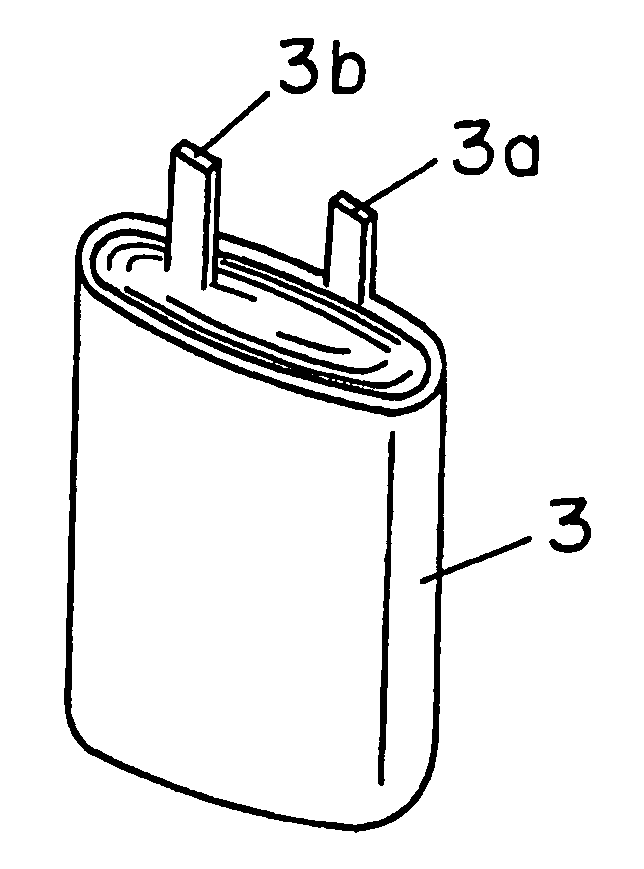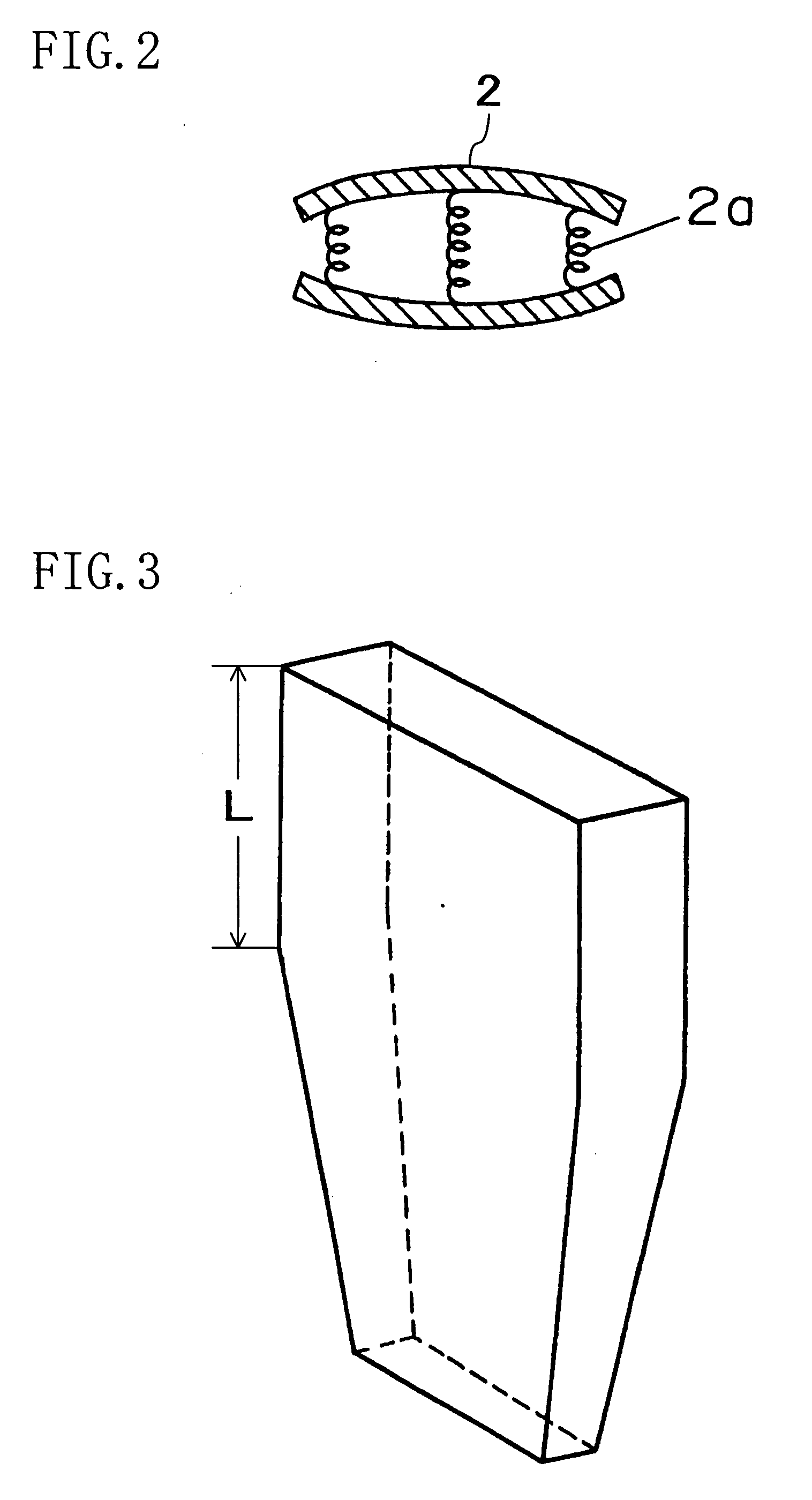Method for producing rectangular flat secondary battery
a secondary battery and rectangular technology, applied in the direction of wound/folded electrode electrodes, cell components, sustainable manufacturing/processing, etc., can solve the problems of increasing internal resistance or variation, affecting the so as to prevent the occurrence of deflection of the electrode plate in compressing the electrode group and suppress the increase of internal resistance of the battery
- Summary
- Abstract
- Description
- Claims
- Application Information
AI Technical Summary
Benefits of technology
Problems solved by technology
Method used
Image
Examples
working example 1
(a) Forming of Positive Electrode Plate
[0050]A positive electrode mixture including lithium cobaltate as an active material, PVDF as a binder and acetylene black as a conducting agent was applied to an aluminum foil as a current collector and dried. The positive electrode mixture dried on the aluminum foil was rolled and then was cut so as to have a width of 29.5 mm. Thus, a hoop of a positive electrode plate was obtained.
(b) Forming of Negative Electrode Plate
[0051]A negative electrode mixture including artificial graphite as an active material, SBR as a binder and carboxymethyl cellulose as a thickener was applied to a copper foil as a collector and dried. The negative electrode mixture dried on the copper foil was rolled and then was cut so as to have a width of 30.6 mm. Thus, a hoop of a negative electrode plate was obtained.
(c) Adjustment of Electrolyte
[0052]1M of LiPF6 was dissolved in a nonaqueous mixed solvent containing ethylene carbonate, ethyl methyl carbonate and diethyl...
working example 2
[0057]In contrast to Working Example 1, as a material of the center core member 2, polypropylene (with a Young's modulus of 4.5 GPa) was used. Other than that, a lithium ion secondary battery was produced in the same manner as in Working Example 1.
working example 3
[0058]In contrast to Working Example 1, as a material of the center core member 2, PVDF (with a Young's modulus of 2.0×10−3 GPa) was used. Furthermore, the center core member 2 was formed so as to have the same dimensions as those in Working Example 1 but have a plate-shape. Other than that, a lithium ion secondary battery was produced in the same manner as in Working Example 1.
PUM
| Property | Measurement | Unit |
|---|---|---|
| Young's modulus | aaaaa | aaaaa |
| Young's modulus | aaaaa | aaaaa |
| width | aaaaa | aaaaa |
Abstract
Description
Claims
Application Information
 Login to View More
Login to View More - R&D
- Intellectual Property
- Life Sciences
- Materials
- Tech Scout
- Unparalleled Data Quality
- Higher Quality Content
- 60% Fewer Hallucinations
Browse by: Latest US Patents, China's latest patents, Technical Efficacy Thesaurus, Application Domain, Technology Topic, Popular Technical Reports.
© 2025 PatSnap. All rights reserved.Legal|Privacy policy|Modern Slavery Act Transparency Statement|Sitemap|About US| Contact US: help@patsnap.com



